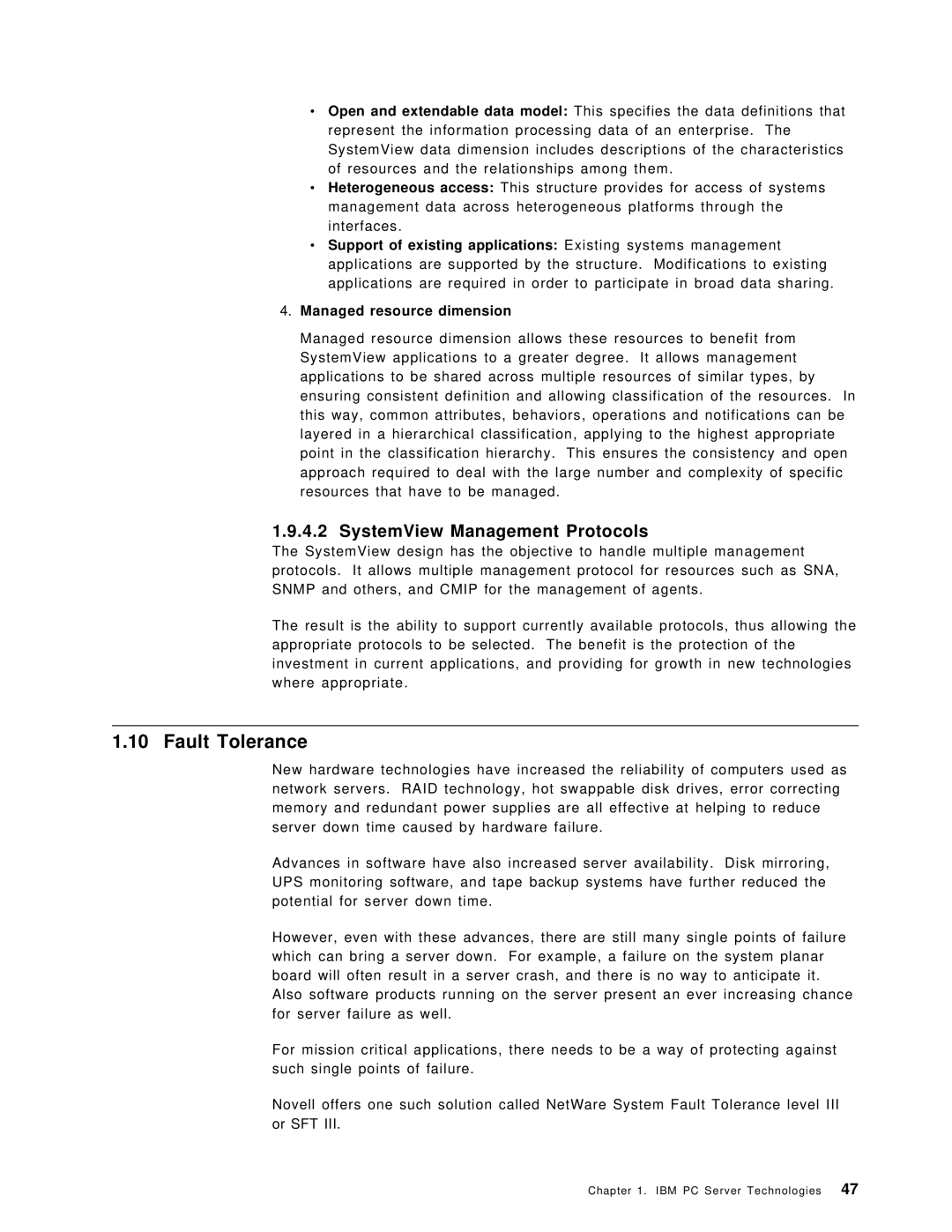∙
∙
∙
Open and extendable data model: This specifies the data definitions that represent the information processing data of an enterprise. The SystemView data dimension includes descriptions of the characteristics of resources and the relationships among them.
Heterogeneous access: This structure provides for access of systems management data across heterogeneous platforms through the interfaces.
Support of existing applications: Existing systems management applications are supported by the structure. Modifications to existing applications are required in order to participate in broad data sharing.
4.Managed resource dimension
Managed resource dimension allows these resources to benefit from SystemView applications to a greater degree. It allows management applications to be shared across multiple resources of similar types, by ensuring consistent definition and allowing classification of the resources. In this way, common attributes, behaviors, operations and notifications can be layered in a hierarchical classification, applying to the highest appropriate point in the classification hierarchy. This ensures the consistency and open approach required to deal with the large number and complexity of specific resources that have to be managed.
1.9.4.2 SystemView Management Protocols
The SystemView design has the objective to handle multiple management protocols. It allows multiple management protocol for resources such as SNA, SNMP and others, and CMIP for the management of agents.
The result is the ability to support currently available protocols, thus allowing the appropriate protocols to be selected. The benefit is the protection of the investment in current applications, and providing for growth in new technologies where appropriate.
1.10 Fault Tolerance
New hardware technologies have increased the reliability of computers used as network servers. RAID technology, hot swappable disk drives, error correcting memory and redundant power supplies are all effective at helping to reduce server down time caused by hardware failure.
Advances in software have also increased server availability. Disk mirroring, UPS monitoring software, and tape backup systems have further reduced the potential for server down time.
However, even with these advances, there are still many single points of failure which can bring a server down. For example, a failure on the system planar board will often result in a server crash, and there is no way to anticipate it. Also software products running on the server present an ever increasing chance for server failure as well.
For mission critical applications, there needs to be a way of protecting against such single points of failure.
Novell offers one such solution called NetWare System Fault Tolerance level III or SFT III.
Chapter 1. IBM PC Server Technologies 47
